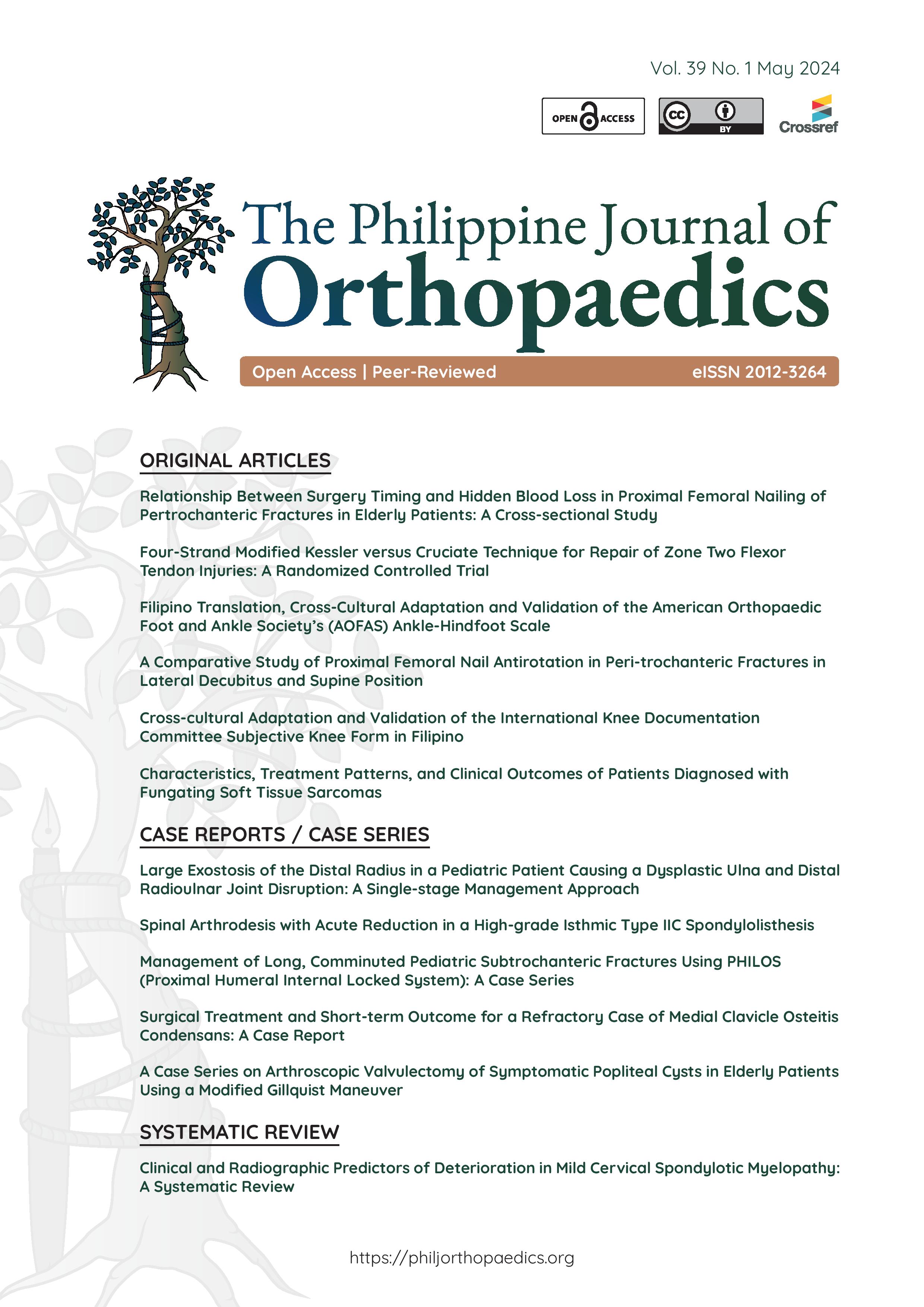Large Exostosis of the Distal Radius in a Pediatric Patient Causing a Dysplastic Ulna and Distal Radioulnar Joint Disruption A Single-Stage Management Approach
Main Article Content
Abstract
The distal radioulnar joint (DRUJ) is an important structure that stabilizes the radius and ulna. Any incongruency may result in limited forearm rotation and a weak grip. Exostosis is a benign bony cartilage-capped outgrowth protruding from the surfaces of affected bones. These occur as solitary lesions in 1-2% of the general population. Primary resection at the base is the mainstay of treatment for solitary exostosis lesions. In rare cases, an exostosis of the distal radius can grow particularly large leading to deformities of the adjacent ulna and DRUJ. In this case report, we present a patient with a large distal radius exostosis resulting in a dysplastic ulna with DRUJ involvement. Case reports on this rare phenomenon report good results following osteotomy and gradual lengthening of the ulna with an external fixator – a multi-stage surgical approach. In this case report, treatment involved resection, pinning, bone grafting with mesh, and the use of a fascial sling taken from the radial volar fascia wrapped around the distal ulna, resulting in near full return of function for the forearm and hand – a single-stage management approach.
Article Details

This work is licensed under a Creative Commons Attribution 4.0 International License.

This work is licensed under a Creative Commons Attribution 4.0 International License.
References
Trebicz-Geffen M, Robinson D, Evron Z, et al. The molecular and cellular basis of exostosis formation in hereditary multiple exostoses. Int J Exp Pathol. 2008;89(5):321–31. https://pubmed.ncbi.nlm.nih.gov/18452536. https://www.ncbi.nlm.nih.gov/pmc/articles/PMC2613984. https;//doi.org/10.1111/j.1365-2613.2008.00589.x.
Vogt B, Tretow HL, Daniilidis K, et al. Reconstruction of forearm deformity by distraction osteogenesis in children with relative shortening of the ulna due to multiple cartilaginous exostosis. J Pediatr Orthop. 2011;31(4):393–401. https://pubmed.ncbi.nlm.nih.gov/21572277. https://doi.org/10.1097/BPO.0b013e31821a5e27.
Hill RA, Ibrahim T, Mann HA, Siapkara A. Forearm lengthening by distraction osteogenesis in children: a report of 22 cases. J Bone Joint Surg Br. 2011;93(11):1550–5. https://pubmed.ncbi.nlm.nih.gov/22058310. https://doi.org/10.1302/0301-620X.93B11.27538.
Aerts BR, van Heeswijk EJ, Beumer A. Reconstruction of the DRUJ in a young adult after resection of a large exostosis of the distal radius. Strategies Trauma Limb Reconstr. 2015;10(2):123-7. https://pubmed.ncbi.nlm.nih.gov/25877933. https://www.ncbi.nlm.nih.gov/pmc/articles/PMC4570885. https://doi.org/10.1007/s11751-015-0224-4.
Azar F, Beaty J, Canale T. Campbell’s Operative Orthopedic,s 13th ed. Elsevier Inc.; 2017





